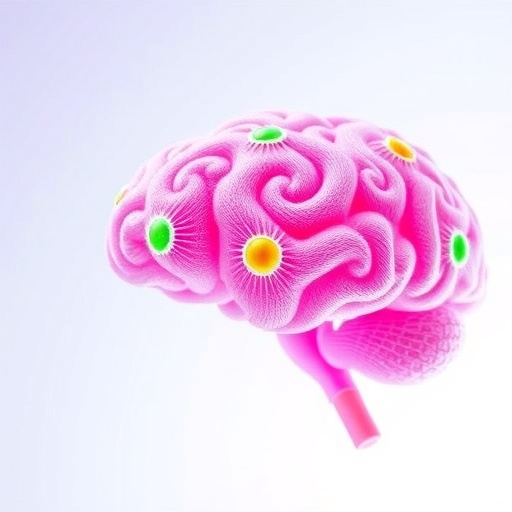Neural Organoids in 3D Scaffolds: A New Frontier in Bioengineered Artificial Intelligence
Our brains remarkably balance staggering computational power with minimal energy consumption, operating at roughly the wattage equivalent of a single light bulb. This ineffable efficiency has long inspired engineers and neuroscientists aiming to replicate such processing prowess in artificial intelligence (AI). Yet, contemporary hardware-based neural networks consume vastly more energy to perform analogous tasks, revealing a striking gap between biological computation and its artificial counterparts.
At Lehigh University, associate professor Yevgeny Berdichevsky from the departments of bioengineering and electrical and computer engineering leads an innovative effort to bridge that divide. Recently awarded a $2 million grant from the National Science Foundation (NSF), his interdisciplinary team is pioneering research to unravel the complex information processing within the brain. Their goal: to harness the brain’s natural computational mechanisms within bioengineered neural organoids and inspire new, energy-efficient AI algorithms.
This ambitious project leverages cutting-edge techniques in tissue engineering. The core of the work revolves around brain organoids—miniature, three-dimensional structures cultivated from adult stem cells that imitate the developmental features of the human cortex. Unlike traditional two-dimensional cultures, these organoids provide a more realistic microenvironment to study neuronal behaviors and circuit dynamics. Yet, neurons in organoids often grow without spatial organization, limiting their computational mimicry of brain tissue.
To overcome this, Lesley W. Chow, an associate professor specializing in bioengineering and materials science, employs 3D-printed biomaterial scaffolds. These finely tuned structures serve as physical frameworks to guide neuron placement within organoids, orchestrating the formation of layered neural networks that mimic the ordered architecture of the human cortex. By inserting neural spheroids—small clusters of diverse neuron types—into pre-designed scaffold cavities and stacking these layers methodically, the team essentially engineers the organoid’s connectivity from the ground up.
But engineering the physical layout is only the first hurdle. Functional validation requires demonstrating that these organized neurons can perform dynamic computations akin to those our brains effortlessly execute. One such complex task is visual motion detection, currently approximated in machines through optical flow algorithms embedded in drone navigation and autonomous vehicle computer vision. These algorithms, despite recent advancements, remain suboptimal in energy efficiency and accuracy.
Berdichevsky’s approach capitalizes on the intrinsic dynamics of cortical neurons to surpass these limitations. By stimulating neurons directly with optical pulses—bypassing the eye entirely—his team encodes visual information into patterned light sequences projected onto targeted neurons. This technique mimics the brain’s natural transformation of photons into electrical signals but allows precise experimental manipulation at the cellular level.
Through microscopy, researchers record neuronal activity by tracking a genetically expressed fluorescent protein whose brightness fluctuates depending on neuron firing. This direct visualization of active neurons, mapped spatially and temporally, provides a rich dataset to decode how the neural network interprets motion. Collaborating with assistant professor Yuntao Liu, the team is developing sophisticated decoding algorithms and computational models to analyze fluorescence patterns. These tools will elucidate not only what the organoid “perceives” but also the velocity and directionality of moving stimuli.
The computational model serves an additional purpose: shaping protocols to train these organoids, enabling learning and adaptation much like neural plasticity in vivo. In doing so, the research embodies a feedback loop—biological computation informing artificial algorithms, which in turn refine engineered neural tissues.
Ethical considerations occupy a central role in this venture. Ally Peabody Smith, an assistant professor of community and population health, investigates the social and legal implications arising from using living neural tissues. Although the organoids remain far too simplistic and minuscule to exhibit consciousness, maintaining transparent ethical boundaries is paramount as bioengineered models increasingly approach functional complexity.
This multidisciplinary endeavor, blending computational neuroscience, bioengineering, materials science, and ethical scholarship, epitomizes the synthesis necessary to translate neural principles into transformative AI technology. As Berdichevsky explains, the integrated design is the project’s greatest strength: combining hardware-inspired neural networks with biologically precise “wetware” to achieve forms of computation that are simultaneously powerful and energy efficient.
If successful, these engineered organoids could offer a groundbreaking proof of concept—showing that biological tissues can execute computations traditionally reserved for silicon processors. This prospect holds the promise of revolutionizing AI architectures, reducing power consumption, and enabling machines to perform intricate tasks with brain-like facility.
As this research moves forward, it underscores a pivotal question at the frontier of science and engineering: can we not only emulate but also evolve the brain’s computing capabilities through biofabrication? The answers emerging from Lehigh University’s labs may well define the next era of intelligent machines.
Subject of Research: Bioengineered neural organoids for biological computation and energy-efficient artificial intelligence.
Article Title: Neural Organoids in 3D Scaffolds: Pioneering Energy-Efficient Biological Computation to Inspire Next-Generation AI
News Publication Date: Information not provided.
Web References:
- Lehigh University Faculty Profile: Yevgeny Berdichevsky
- NSF Award Abstract (#2515371)
- NSF 24-508: Emerging Frontiers in Research and Innovation (EFRI-2024/25)
- Lehigh University Faculty Profile: Lesley W. Chow
- Lehigh University Faculty Profile: Yuntao Liu
- Lehigh University College of Health Faculty: Ally Peabody Smith
Image Credits: Courtesy of Yevgeny Berdichevsky / Lehigh University
Keywords: Artificial intelligence, Organoids, Organ cultures, Neurons, Neural stem cells, Systems neuroscience, Neural networks, Engineering, Bioengineering, Electrical engineering, Neuroscience, Brain tissue, Brain




